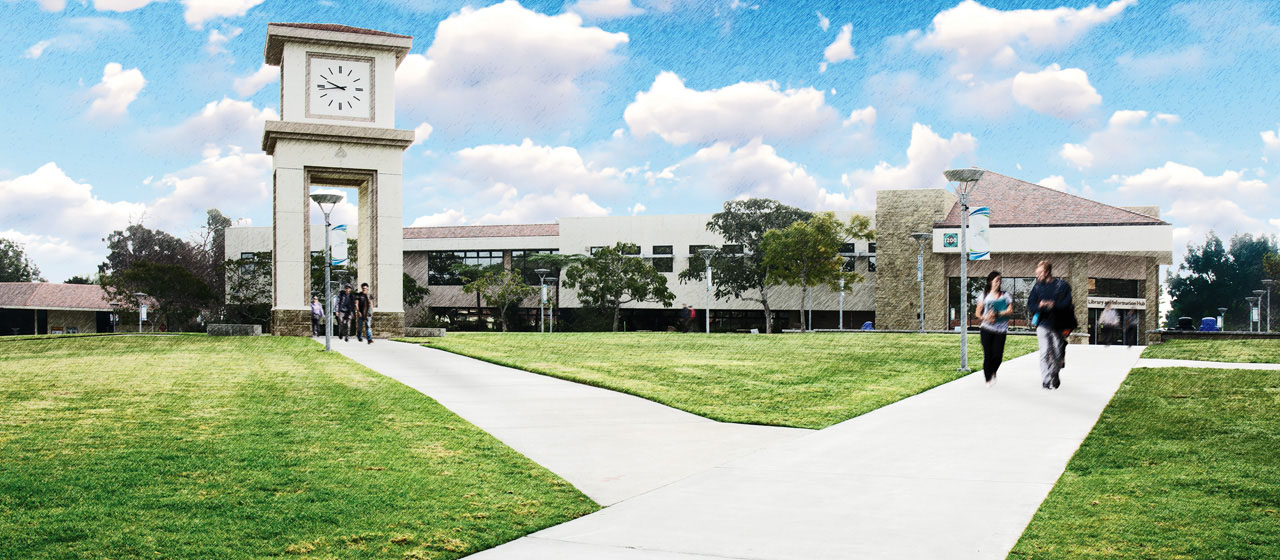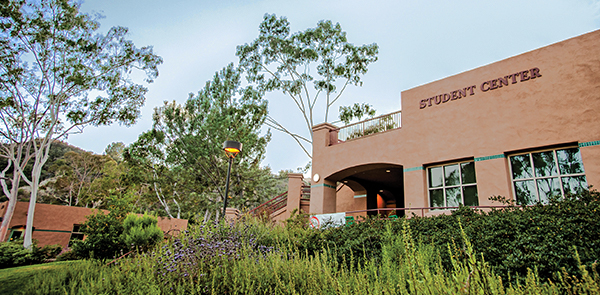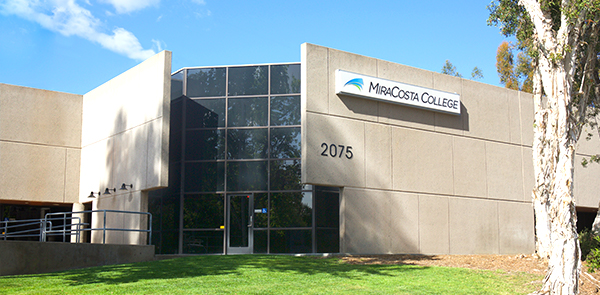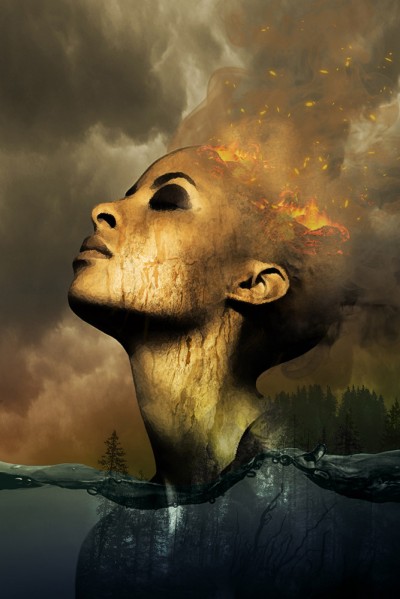 Search
MiraCosta
Search
MiraCosta

Media Arts & Technologies
Media Arts & Technologies
How to Read Course Descriptions
For more detailed information about a course, such as its content, objectives, and fulfillment of a degree, certificate, or general education requirement, please see the official course outline of record, available on the Courses and Programs webpage at https://www.miracosta.edu/governance/courses-and-programs-committee/curriculum-management-system.html.
Courses
MAT 105: History of Graphic Design
Units: 3
Prerequisites: None
Acceptable for Credit: CSU, UC
Lecture 3 hours.
Course Typically Offered: Fall
The course surveys the origin and evolution of graphic design from the nineteenth century to the present day. It will explore the development and influence of graphic communication through genre, design, style, and format from historical, multi-cultural, and global perspectives. Topics include the influence of art and technology on graphic design, types of graphic representation, significant historical design movements, and the importance of graphic design in contemporary culture and a global economy.
MAT 110: Digital Imaging 1: Adobe Photoshop
Units: 3
Prerequisites: None
Acceptable for Credit: CSU, UC
Lecture 2.50 hours, laboratory 1.50 hours.
Course Typically Offered: Fall, Spring, and Summer
In this key foundation course students use Adobe Photoshop to create digital imaging designs of professional quality. Through the manipulation of photographic and other raster graphic images, students generate unique artwork that involves photo editing, tonal and color correction, masking, layer adjustments, painting techniques, blending modes, and advanced compositing. Students study layout and design techniques, application of color using CMYK and RGB, and appropriate typography practices. This course involves considerable hands-on instruction and multiple projects.
MAT 120: Media Design 1: Production
Units: 3
Prerequisites: None
Acceptable for Credit: CSU
Lecture 2.50 hours, laboratory 1.50 hours.
Course Typically Offered: Fall, Spring
This course introduces the fundamental skills needed for the design and production of multimedia projects and interactive programs. Topics include capturing and editing video, images, and audio, basic 3D modeling and animation, and interactive program design and development. The course also covers proper formats for playback through various presentation platforms and the basics of network protocol.
MAT 125: Web Design 1: Fundamentals
Units: 3
Prerequisites: None
Acceptable for Credit: CSU, UC
Lecture 2.50 hours, laboratory 1.50 hours.
Course Typically Offered: Fall, Spring, and Summer
This course introduces the fundamentals of building webpages, including HTML coding, Cascading Style Sheets (CSS), image optimization, web typography, interface design, basic JavaScript, and Secure File Transfer Protocol (SFTP) for uploading websites. Students also learn about browser and platform issues, modern coding best practices, responsive design, and management techniques for personal websites.
MAT 135: Graphic Design 1: Principles
Units: 3
Prerequisites: None
Acceptable for Credit: CSU, UC
Lecture 2 hours, laboratory 3 hours.
Course Typically Offered: Fall, Spring
This course introduces the visual communication principles and concepts of successful graphic design. Topics include form, color palettes, text/image relationships, typography, grid structures, and layout design. The course develops and refines each student's personal design sensibility by applying appropriate and creative design presentations within cultural and historical contexts.
MAT 140: 3D Animation 1: Maya
Units: 3
Prerequisites: None
Advisory: MAT 120.
Acceptable for Credit: CSU
Lecture 2.50 hours, laboratory 1.50 hours.
Course Typically Offered: Fall, Spring
This course introduces students to the concepts and design of 3D modeling, animation, and rendering using Autodesk Maya. Topics include storyboard development and visualization, efficient modeling and texturing techniques, 3D environment design (including lighting and camera angles), object and camera animation, and rendering considerations. The course also covers proper formats for delivery through various mediums.
MAT 145: UI/UX Design
Units: 3
Prerequisites: None
Acceptable for Credit: CSU
Lecture 2.50 hours, laboratory 1.50 hours.
Course Typically Offered: Fall
This course provides an introduction to user interface (UI) and user experience (UX) design and prototyping. Students learn user-centered design approaches to research, design, prototype, and test user interfaces for screen-based media, such as websites and apps. Topics include UX research and strategy, user personas and user scenarios, information architecture, interaction design, prototyping, usability testing, and industry tools and techniques. Students collaborate to design and prototype digital products.
MAT 150: Animation and Interactivity
Units: 3
Prerequisites: None
Advisory: MAT 120.
Acceptable for Credit: CSU
Lecture 2 hours, laboratory 3 hours.
Course Typically Offered: Fall, Spring
This course introduces students to 2D animation and interactive media design techniques and tools. Students learn to integrate animation, text, graphics, audio, and video to create rich, interactive user experiences. The course emphasizes design principles for time-based media and effective user interface and interaction design. Students produce animation projects and interactive applications for delivery on the Web and other platforms.
MAT 155: Graphic Design 2: Typography
Units: 3
Prerequisites: None
Advisory: MAT 135.
Acceptable for Credit: CSU
Lecture 2 hours, laboratory 3 hours.
Course Typically Offered: Fall
This course covers the essential concepts of typographic design and its incorporation into all forms of visual communication. Topics include historical development and cultural impacts, type design, ligature, word/image fusion, and structural and experimental design. Students develop a solid understanding of how to use type and letterforms to improve the quality of comprehension and communication.
MAT 160: Video 1: Production
Units: 3
Prerequisites: None
Advisory: MAT 120.
Acceptable for Credit: CSU, UC
Lecture 2.50 hours, laboratory 1.50 hours.
Course Typically Offered: Fall, Spring
This course offers detailed coverage of the video production environment. It covers the process of creating and editing video programs from concept and storyboards through shooting and recording, culminating in acquiring, editing, and mastering a digital video production. Topics also include proper formats for delivery through various mediums.
MAT 165: Web Design 2: Tools and Techniques
Units: 3
Prerequisites: None
Advisory: MAT 125.
Acceptable for Credit: CSU
Lecture 2 hours, laboratory 3 hours.
Course Typically Offered: Fall, Spring
This intermediate-level course builds on the skills developed in MAT 125. It introduces students to techniques for designing websites using industry-standard web design and development tools including Dreamweaver and Photoshop. Topics include responsive web design, coding, image editing and optimization, animation, and producing websites using HTML, CSS, and JavaScript.
MAT 170: Digital Illustration 1: Adobe Illustrator
Units: 3
Prerequisites: None
Acceptable for Credit: CSU
Lecture 2.50 hours, laboratory 1.50 hours.
Course Typically Offered: Fall, Spring
Students use Adobe Illustrator to create and manipulate vector graphic images into personal artwork and commercial output. Students generate effective typography and vector shapes, utilize a variety of color palettes and libraries, develop unique brushes and patterns, and convert raster images into vector art. Through hands-on instruction and multiple projects, students transform objects, manipulate perspective, utilize blends and gradients, understand the differences between CMYK and RGB, and import and export different graphic file formats.
MAT 175: Web Design: JavaScript and jQuery
Units: 3
Prerequisites: MAT 125.
Advisory: MAT 165.
Acceptable for Credit: CSU
Lecture 2.50 hours, laboratory 1.50 hours.
Course Typically Offered: Spring
This course introduces web design students to JavaScript and jQuery for interactive web development, including how JavaScript can be used in conjunction with HTML and CSS to add interactivity, animation, visual effects, and advanced functionality to web pages. Students explore interface design and core programming concepts in JavaScript and jQuery to create rich user experiences, manage dynamic content, create animation, and make web pages more interactive and intuitive. Students learn to design and script user interface elements common on websites, such as content sliders, interactive galleries, and more. Students also learn to use the HTML5 canvas element with JavaScript to draw, animate, and create interactive graphics for HTML5 games or web applications. Topics also include integrating and customizing jQuery plugins, working with AJAX, and using API interfaces to web services, such as maps and social media.
MAT 180: Digital Publishing: Adobe InDesign
Units: 3
Prerequisites: None
Advisory: MAT 110 and MAT 170.
Acceptable for Credit: CSU
Lecture 2.50 hours, laboratory 1.50 hours.
Course Typically Offered: Fall, Spring
This course introduces students to Adobe InDesign, the page layout software program used by professional graphic artists to publish ads, business cards, brochures, postcards, newsletters, magazines, books, and more. It involves considerable hands-on instruction and projects similar to those faced by today's designers. Students learn how to prepare documents for professional publication, how to format type, import images, use styles, generate tables, create swatches, and apply shortcuts. Students learn typographic and publishing techniques, basic design principles, and how to apply spot and process color. Students will examine, troubleshoot, and package digital files for output to a commercial press and for the Web.
MAT 185: Graphic Design 3: Design and Layout
Units: 3
Prerequisites: None
Advisory: MAT 135.
Acceptable for Credit: CSU
Lecture 2 hours, laboratory 3 hours.
Course Typically Offered: Fall, Spring
This course covers the process of creating effective, efficient, and dynamic layouts to solve complex design problems. Students explore every stage of the design process, including concept development, intuitive design, and structural hierarchy and grid design. The course emphasizes developing a creative problem-solving approach and refining a personal design sense.
MAT 190: Programming for Animation, Interactivity, and Games
Units: 3
Prerequisites: None
Advisory: MAT 150.
Acceptable for Credit: CSU, UC
Lecture 2 hours, laboratory 3 hours.
Course Typically Offered: Fall even years
This course emphasizes programming for interactive media, including 2D games and rich Internet applications. Students learn to code within the context of the visual arts using ActionScript, Processing, and/or JavaScript and explore the creative and technical aspects of designing interactive user experiences that integrate media, animation, and interactivity. Additional topics include user interface design, experience design, interactive storytelling, game design, animation techniques, and developing content for delivery across a variety of platforms and devices.
MAT 200: Video 2: Post-Production and Special Effects
Units: 3
Prerequisites: None
Advisory: MAT 110 or MAT 160.
Acceptable for Credit: CSU
Lecture 2.50 hours, laboratory 1.50 hours.
Course Typically Offered: Fall
This course offers detailed coverage of the video post-production environment. Students learn techniques for creating complex video sequences by combining video, animated graphics, Foley effects, advanced editing techniques, green screen, and other special effects using industry-standard software. The course emphasizes instruction in advanced video editing techniques, as well as final project output for delivery through various presentation platforms.
MAT 210: Digital Imaging 2: Advanced Photoshop
Units: 3
Prerequisites: MAT 110.
Enrollment Limitation: Not open to students with prior credit in ART 252.
Acceptable for Credit: CSU
Lecture 2.50 hours, laboratory 1.50 hours.
Course Typically Offered: Fall, Spring
This course builds upon knowledge and skills gained in MAT 110. Students use Adobe Photoshop to acquire advanced digital imaging techniques for image design and production. Through specific projects, students develop higher-level compositing skills, utilize advanced color management tools, create a responsive design mockup for web and mobile devices, apply animation and sound, and generate 3D objects. Multiple projects reinforce acquired knowledge through preparation of digital files for print and online delivery.
MAT 220: Digital Illustration 2: Advanced Illustrator
Units: 3
Prerequisites: MAT 170.
Acceptable for Credit: CSU
Lecture 2.50 hours, laboratory 1.50 hours.
Course Typically Offered: Spring
This is an advanced course for MAT students who are planning to pursue a career in graphic design. This course builds upon concepts gained in MAT 170 and addresses advanced vector design skills for developing logos, three-dimensional packaging, signage, advertisements, business cards, digital illustrations, and vector graphics for the Web.
MAT 225: Web Design: PHP and WordPress
Units: 3
Prerequisites: None
Advisory: MAT 165.
Acceptable for Credit: CSU
Lecture 2 hours, laboratory 3 hours.
Course Typically Offered: Fall
This course develops skills for building database driven, dynamically generated websites using PHP, HTML, CSS, JavaScript, and WordPress, with design considerations for accessibility and responsiveness. Students develop dynamic websites and content management system (CMS) web applications using modern design techniques as a basis for creating professional, commercial, or other dynamic, interactive applications. Topics include PHP scripting fundamentals, templating principles, and reusable modular code that integrates with HTML, CSS, JavaScript, and the WordPress CMS. Students also learn how to customize and create WordPress themes, leveraging web design software such as Adobe Dreamweaver and open-source code editors to create professional, data-driven websites.
MAT 230: Advanced Publishing: Output for Print
Units: 3
Prerequisites: None
Advisory: MAT 180.
Acceptable for Credit: CSU
Lecture 2 hours, laboratory 3 hours.
Course Typically Offered: Spring odd years
This advanced publishing course takes students through the process of producing and printing a press-ready publication at a professional printing company. Students explore print technologies (e.g., offset printing, variable-data printing, and direct digital printing), learn the steps required for prepress, production, binding, trimming, and finishing, and apply prepress techniques using Adobe InDesign, Adobe Photoshop, and Adobe Illustrator. The course includes a professional print bureau tour.
MAT 235: Web Design 3: UX and UI Design and Production
Units: 3
Prerequisites: None
Advisory: MAT 165.
Acceptable for Credit: CSU
Lecture 2 hours, laboratory 3 hours.
Course Typically Offered: Spring
This course emphasizes user experience (UX) and user interface (UI) design and production. Students learn to plan, design, and develop complex, real-world, professional-level websites in a team environment using modern web standards, best practices, and workflows. Topics include site planning and research, content strategy, information architecture development, user personas and user scenarios, usability analysis and testing, programming and production techniques, and emerging industry trends.
MAT 270: Advanced Design Studio
Units: 3
Prerequisites: None
Enrollment Limitation: Audition with portfolio and instructor approval.
Acceptable for Credit: CSU
Lecture 2 hours, laboratory 3 hours.
Course Typically Offered: Fall
This capstone course provides advanced students firsthand experience in the function of a professional studio environment where they create real-world projects for real-world clients. Students experience client relations, project development and management, problem solving, team management, asset management, and project delivery considerations.
MAT 290: Portfolio Development
Units: 3
Prerequisites: None
Advisory: It is recommended that students complete most courses within a MAT certificate or degree program before enrolling in MAT 290.
Acceptable for Credit: CSU
Lecture 3 hours.
Course Typically Offered: Fall, Spring
Students develop a professional portfolio that showcases their design, media, and/or artistic skills and completed projects. Topics also include developing a personal brand and related marketing materials, such as a website, resume, business card, and cover letter. The portfolio's content and format are determined by individual student goals in order to market themselves as a freelancer or prospective employee.
MAT 292: Internship Studies
Units: 0.5-3
Prerequisites: None
Corequisite: Complete 75 hrs paid or 60 hrs non-paid work per unit.
Enrollment Limitation: Instructor, dept chair, and Career Center approval. May not enroll in any combination of cooperative work experience and/or internship studies concurrently.
Acceptable for Credit: CSU
Course Typically Offered: To be arranged
This course provides students the opportunity to apply the theories and techniques of their discipline in an internship position in a professional setting under the instruction of a faculty-mentor and site supervisor. It introduces students to aspects of the roles and responsibilities of professionals employed in the field of study. Topics include goal-setting, employability skills development, and examination of the world of work as it relates to the student's career plans. Students must develop new learning objectives and/or intern at a new site upon each repetition. Students may not earn more than 16 units in any combination of cooperative work experience (general or occupational) and/or internship studies during community college attendance.
MAT 296: Topics in Media Arts & Technologies
Units: 1-3
Prerequisites: None
Acceptable for Credit: CSU
Lecture 1 hour.
Lecture 2 hours.
Lecture 3 hours.
Course Typically Offered: To be arranged
This course gives students an opportunity to study topics in Media Arts and Technologies that are not included in regular course offerings. Each Topics course is announced, described, and given its own title and 296 number designation in the class schedule.
MAT 299: Occupational Cooperative Work Experience
Units: 1-4
Prerequisites: None
Corequisite: Complete 75 hrs paid or 60 hrs non-paid work per unit.
Enrollment Limitation: Career Center approval. May not enroll in any combination of cooperative work experience and/or internship studies concurrently.
Acceptable for Credit: CSU
Course Typically Offered: To be arranged
Cooperative Work Experience is intended for students who are employed in a job directly related to their major. It allows such students the opportunity to apply the theories and skills of their discipline to their position and to undertake new responsibilities and learn new skills at work. Topics include goal-setting, employability skills development, and examination of the world of work as it relates to the student's career plans. Students may not earn more than 16 units in any combination of cooperative work experience (general or occupational) and/or internship studies during community college attendance.
Campus Locations

1831 Mission Avenue
Oceanside, CA 92058
760.795.8710
888.201.8480
View Map

1 Barnard Drive
Oceanside, CA 92056
760.757.2121
888.201.8480
View Map

3333 Manchester Avenue
Cardiff, CA 92007
760.944.4449
888.201.8480
View Map

2075 Las Palmas Drive
Carlsbad, CA 92011
760.795.6820
888.201.8480
View Map
 The Media Arts & Technologies program provides a focused sequence of courses for students who wish to transfer to a four-year institution or gain employment in the fields of graphic design, web and interactive design, video production, animation, digital media, and print production and delivery. Career options include graphic design, user interface (UI) design, user experience (UX) design, web design, web development, multimedia programming, video editing, video production, media content development, information architecture, graphics production, and layout design. Specific career positions include graphic designer, web designer, video editor, web developer, user interface (UI) designer, user experience (UX) designer, interactive designer, art production assistant, video production assistant, special effects artist, background artist, product modeler, product animator, and storyboard artist.
The Media Arts & Technologies program provides a focused sequence of courses for students who wish to transfer to a four-year institution or gain employment in the fields of graphic design, web and interactive design, video production, animation, digital media, and print production and delivery. Career options include graphic design, user interface (UI) design, user experience (UX) design, web design, web development, multimedia programming, video editing, video production, media content development, information architecture, graphics production, and layout design. Specific career positions include graphic designer, web designer, video editor, web developer, user interface (UI) designer, user experience (UX) designer, interactive designer, art production assistant, video production assistant, special effects artist, background artist, product modeler, product animator, and storyboard artist.